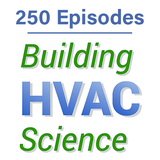The Best Digital Manometers for HVAC Techs
Did you know that there were 367,900 HVAC technicians in the United States in 2018?
The expected growth in our industry is 13% from 2018 to 2028. And it's no wonder why because residential and commercial buildings both need to be properly heated and cooled throughout the year. If you're a HVAC technician or planning to become one then you need to know about manometers.
Keep reading to learn more about manometers, including the different types of manometers and which are the best digital manometers available right now.
What Are the Different Types of Manometers?
A manometer is a device used to measure the pressure exerted in a fluid column, the fluid can also be a gas. In fact, in the HVAC world we are usually measuring gas pressure. There are different types of manometers that offer different measurement applications. The most commonly manometers are used to measure gas and liquid. Nowadays, manometers use electronic sensors in place of the fluid column. These sensors were first mass-produced to serve the automotive emissions controls market.
The two main types of manometers are analog and digital. Analog manometers can be better for some jobs, when you want to get "a feel for the reading" by watching the dial move. However, most technicians prefer to use digital manometers as they provide a steady number without having to squint and try to line up a needle against the numbers behind it - the parallax effect.
What Is an Analog Manometer?
Analog manometers can use a fluid that is in a U-shaped tube to test the pressure. Technicians can tell if there's no pressure in an analog manometer because the fluid will settle in the middle of the tube. However, if the pressure is higher on one side of the tube, the fluid moves; the movement of the fluid up the scale behind it indicates the air pressure. The U-tube manometer measures differential pressure by balancing the weight of a liquid between two pressures. Less dense liquids such as water can measure small pressure differences and are commonly used in the HVAC world.
Some technicians prefer analog manometers because they don't need a power supply. This means that they won't unexpectedly run out of power, unlike a battery powered, electronic manometer. Another reason why some technicians prefer these meters is that they are easy to operate and measure pressure.
One of the classic analog manometers, uses a different technology. The Dwyer Magnehelic(R) has a very sensitive component in it called a diaphragm. When pressure is applied on the diaphragm, through a series of mechanical linkages, a magnet and a helix (aha! MagneHelic!) and on jeweled bearings, the pointer of the Magnehelic(R) moves to show the pressure level being measured.
What Is a Digital Manometer?
Unlike analog manometers, digital manometers don't use Hydrostatic balance (balancing a fluid or water) to measure the pressure. Digital HVAC manometers use a pressure sensor or transducer to measure pressure. Pressure transducers convert observed pressure levels into an electrical signal that then can be used to understand the pressure.
Most technicians prefer to use digital manometers because they're more portable and easy to carry. Digital manometers also include easy to read displays, which help to prevent mistakes. Another advantage of a digital manometer is data can be recorded (or logged), and transmitted via cable or BlueTooth to computers or apps in Phones or tablets. They also don't use messy fluids (some of the analog manometer fluids can be toxic, such as mercury, but this is only for very high pressure applications usually not found in the HVAC world).
3 Best Digital Manometers
Ease of use and portability are two reasons why digital manometers are so popular among HVAC technicians, but which are the best manometers available? Use our guide on the best 3 digital manometers to find the right tool for your business.
1. Fieldpiece SDMN5 Dual-Port Manometer
Techs who find themselves out on the field all the time know the importance of having durable and easy to carry tools, which is why we think the Fieldpiece SDMN5 Dual-Port Manometer is one of the best meters on the market. This device was designed to measure static, gas, and differential pressure.
This meter can read pressure from -60inWC to 60inWC (-150.0 mBar to 150.0 mBar). The Fieldpiece SDMN5 has two ports to allow for accurate differential pressure measurement applications. When 2 hoses are connected between these two ports the manometer calculates the difference in pressure between the location where the other of the hoses are located.
Our favorite features of this manometer are the zero adjust button and the auto-off function (to help save power and maximize battery life). The magnet on the back of the device is also great for keeping your device mounted to the equipment, in sight, and at eye level at all times. The magnet also keeps your meter out of the clutter of the equipment usually present as service work is being done.
2. Testo 510 Manometer
The Testo 510 Manometer is another great option for those techs looking to invest in a compact, portable digital manometer. This device is easy to use and with the backlit display, taking readings are easy too, no matter where you are. The protective cap, wrist strap, and belt pouch all ensure that you know where this device is at all times.
Built-in magnets mean that you can perform hands-free readings or store your manometer in an easy-to-see place, so you don't forget it after you've finished the job. The Testo 510 Manometer can be used to measure pressure from 0 to 40 inches of water column (in H2O or inWC) (0 to 100 mBar). This device can also measure in the following units, mmH20, PSI, mmHg, and meter/sec, or Feet Per Minute (FPM) when used with an optional Pitot static tube.
The Testo 510 can also be used to measure other types of pressure (including pressure drops across coils and filters, manifold pressure, and total external static pressure) with additional accessories readily available on our site.
3. Extech Pitot Tube + Differential Manometer
The Extech Pitot Tube + Differential Manometer is ideal for those difficult to reach ducts and HVAC applications, thanks to the pitot tube that comes with the Extech HD350. Those who need to measure air velocity, the pressure inside ventilation, and air flow, will find it a breeze with this device, no matter how difficult the HVAC system is to get to.
The Extech HD350 can show both test results and pressure measurements at the same time, which can help you save time on your jobs. Technicians wanting to measure a range of different units can do so with this device, as you can measure mBar, psi, Pa, inH20, and mmH20. And air velocity can be calculated in m/s, knots, km/h, ft/min, and MPH.
Other features that make this device a favorite are the ability of it to hold data and the auto power-off function, which means you can save data for later and save battery life. Technicians also enjoy using the Extech HD350 because of it's easy to read display with backlighting.
HVAC technicians need to have a good functional manometer in their toolbox, but they also need these essential HVAC tools too, so make sure you're well prepared for your next job by having the latest tools.
Find the Right Manometer for Your Next Job
If you're thinking of updating your manometers then be sure to check out our guide on the best digital manometers. Remember to understand what measurements you'll be reading most before choosing the right manometer for you.
Get in touch with our team to find out more about which digital manometer is right for your next job.
Recent Posts
-
250 Episodes of HVAC and Building Science (December 2025)
250 Episodes of Building HVAC Science: What We've Learned About Buildings, Comfort, …26th Dec 2025 -
TruTech Tools Leadership Transitions to Support Continued Growth
TruTech Tools Leadership Transitions to Support Continued Growth …4th Dec 2025 -
ESCO Top 25 HVAC Instructors 2026 – Nominations | TruTech Tools
Nominate an HVAC Instructor for the 2026 ESCO "Most Influential HVACR …22nd Oct 2025



